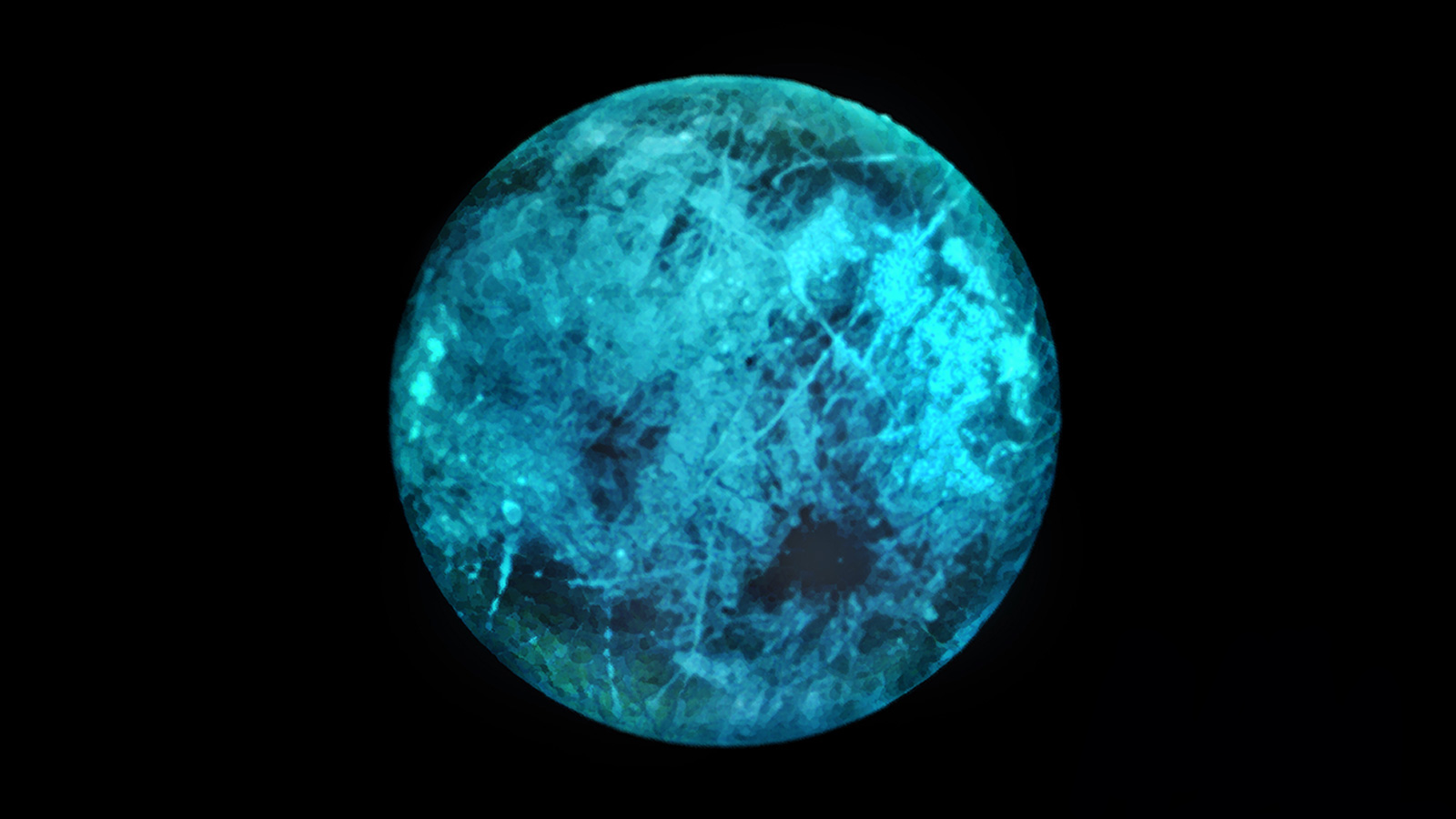Europa: Nasa discovers the secret to Jupiter’s colour-changing, glowing moon
The glow could provide more information about the moon’s global interior ocean

Your support helps us to tell the story
From reproductive rights to climate change to Big Tech, The Independent is on the ground when the story is developing. Whether it's investigating the financials of Elon Musk's pro-Trump PAC or producing our latest documentary, 'The A Word', which shines a light on the American women fighting for reproductive rights, we know how important it is to parse out the facts from the messaging.
At such a critical moment in US history, we need reporters on the ground. Your donation allows us to keep sending journalists to speak to both sides of the story.
The Independent is trusted by Americans across the entire political spectrum. And unlike many other quality news outlets, we choose not to lock Americans out of our reporting and analysis with paywalls. We believe quality journalism should be available to everyone, paid for by those who can afford it.
Your support makes all the difference.Europa, one of Jupiter’s moons, glows in the dark as well as the daytime, and changes colours, Nasa has found.
Scientists suggest that radiation coming from Jupiter coasts the moon in electrons and other particles. The salty compounds on the moon’s surface react to this radiation and emits a green, blue, or white light.
Nasa’s Jet Propulsion lab used a spectrometer – a measuring instrument which can separate light into its component colours – to measure how the the reflections on the moon’s icy surface.
It is the same process that was used by scientists to gather information about the $10 quintillion ($10,000,000,000,000,000,000) asteroid that is floating between Mars and Jupiter, as well as finding the Moon’s potential long-lost twin.
"We were able to predict that this nightside ice glow could provide additional information on Europa's surface composition. How that composition varies could give us clues about whether Europa harbors conditions suitable for life," said JPL's Murthy Gudipati.
Europa’s surface is made of a mixture of ice and common salts, including magnesium sulfate (Epsom salt) and sodium chloride (table salt).
Salt glowing from electrons penetrating its surface is common, but scientists did not expect that new ice compositions would change the way the ice glowed, implying that each type of ice had a different spectrum.
To test this, Nasa built a unique instrument called the Ice Chamber for Europa's High-Energy Electron and Radiation Environment Testing (ICE-HEART).
Scientists then took the equipment to a high-energy electron beam facility to test how organic material under Europa’s ice would react to radiation.
"Seeing the sodium chloride brine with a significantly lower level of glow was the 'aha' moment that changed the course of the research," said Fred Bateman, co-author of the paper which was published in Nature.
By analysing the surface of the moon, scientists will be able to find out more about the global interior ocean that lies underneath it.
"If Europa weren't under this radiation, it would look the way our moon looks to us - dark on the shadowed side," Gudipati said. "But because it's bombarded by the radiation from Jupiter, it glows in the dark."
Nasa’s next mission to Europa – the Europa Clipper mission - is set to launch this decade. It is hoped that the information gathered by the mission might help scientists understand whether the moon has the potential to support life.
Previous studies of Europa suggest it may contain three times as much water as Earth and its ocean reaches a depth of 62 miles - nearly ten times the deepest point on this planet.
Mission scientists are using these new findings to evaluate whether the glow would be detectable by the spacecrafts instruments, as it is possible that the salty components could be identified.
"It's not often that you're in a lab and say, 'We might find this when we get there,'" Gudipati said. "Usually it's the other way around - you go there and find something and try to explain it in the lab. But our prediction goes back to a simple observation, and that's what science is about."



Join our commenting forum
Join thought-provoking conversations, follow other Independent readers and see their replies
Comments